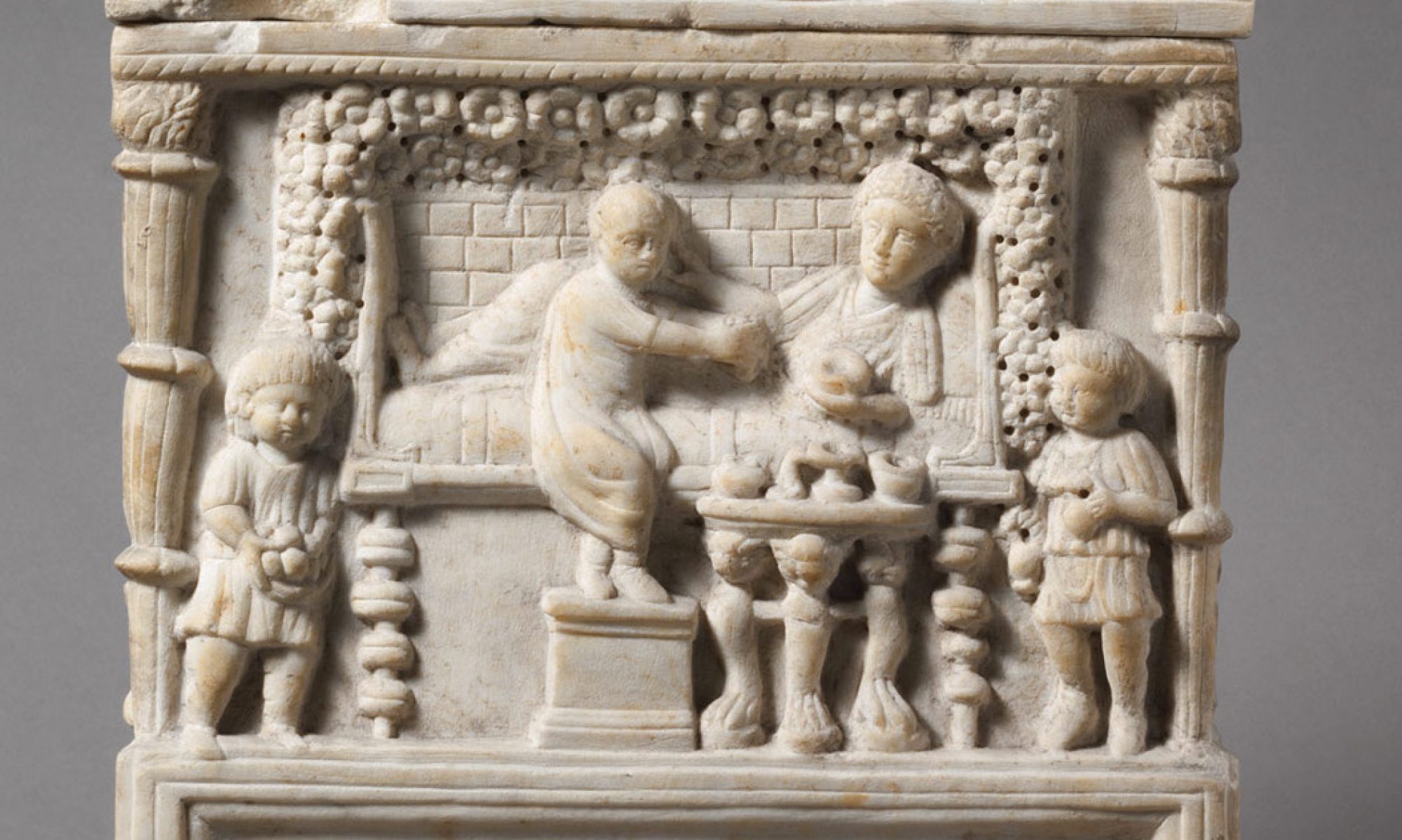Altmann, Walter. Die römischen Grabaltäre der Kaiserzeit. Berlin: Weidmann, 1905.
Borbonus, Dorian. Columbarium Tombs and Collective Identity in Augustan Rome. Cambridge: Cambridge University Press, 2014.
Boschung, Dietrich. Antike Grabaltäre aus den Nekropolen Roms. Bern: Verlag Stämpfli & Cie Ag, 1987.
Buonumore, M. 1982. “Materiali per lo studio del colombario dei liberti
Davies, Glenys. “Before Sarcophagi” Life, Death, and Representation. Some New Work on Roman Sarcophagi.
Davies, Glenys. The Ince Blundell Collection of Classical Sculpture Volume 2: The Ash Chests and Other Funerary Reliefs. Mainz am Rhein, 2007.
Dessau, Hermann. Inscriptiones Latina Selectae. 2 Vols. Weidmann, 1906.
[available online]
Edmondson, Jonathan. “Inscribing Roman Texts: Officinae, Layout, and Carving Techniques.” In eds. Christer Bruun and Jonathan Edmondson, The Oxford Handbook of Roman Epigraphy. New York: Oxford University Press, 2014. 111-130.
Fehl, Maria Raina. “Archaeologists at Work in 1726: The Columbarium of the Household of Livia Augusta.” In Ultra Terminum Vagari: Scritti in Onore Di Carl Nylander, edited by Carl Nylander and Börje Magnusson, 89-112. Roma: Quasar, 1997.
Hope, Valerie M. “Constructing Roman Identity: Funerary Monuments and Social Structure in the Roman World.” Mortality 2, no. 2 (1997): 103-121.
Kehoe, Dennis P. “The Early Roman Empire: Production.” In The Cambridge Economic History of the Greco-Roman World, edited by Walter Scheidel, Ian Morris and Richard P. Saller, 543- 569. Cambridge; New York: Cambridge University Press, 2007.
Kleiner, Diana E. E. Roman Imperial Funerary Altars with Portraits. Rome: Brettschneider, 1987.
Lanciani, Rodolfo. Pagan and Christian Rome. New York: Houghton, Mifflin, and Company, 1892.
Macciocca, M. s.v. “Liviae Augustae Libertorum Et Servorum Monumentum.” In Lexicon Topographicum Urbis Romae: Suburbium, edited by Adriano La Regina, 3, 235-238. Roma: Quasar, 2005.
Nock, Arthur D. Cremation and Burial in the Roman Empire. Harvard Theological Review 25(1932): 321-359.
Nock, Arthur D. “Sarcophagi and Symbolism.” American Journal of Archaeology50(1946): 140-170.
Patterson, John R. “Patronage, Collegia and Burial in Imperial Rome.” In Death in Towns: Urban Responses to the Dying and the Dead, 100-1600, edited by Steven Bassett, 15-27. Leicester: Leicester University Press, 1992.
Penner, Lindsay. “Gender, Household Structure and Slavery: Re-Interpreting the Aristocratic Columbaria of Early Imperial Rome.” In Families in the Greco-Roman World, edited by Ray Laurence and Agneta Strömberg, 143-158. London and New York: Continuum, 2012.
Perna, Simona. “Roman Cinerary Urns in Coloured Stone: Production and Significance.” PhD diss. University of London. 2014.
Petersen, Lauren Hackworth. The Freedman in Roman Art and Art History. Cambridge: Cambridge University Press, 2006.
Petersen, Lauren Hackworth. “‘Arte Plebea’ and Non-elite Roman Art,” In A Companion to Roman Art, ed. Barbara E. Borg. Malden, MA: Wiley Blackwell, 2015.
Poulsen, Birte and Troels Kristensen, eds. Ateliers and Artisans in Roman Art and Archaeology. JRA Supplementary Series Number 92. Portsmouth, RI: Journal of Roman Archaeology, 2012.
Rockwell, Peter. The Art of Stoneworking: A Reference Guide. Cambridge: Cambridge University Press, 1993.
Scheffer, Charlotte. Roman Cinerary Urns in Stockholm Collections. Stockholm: Medelhavsmuseet, 1987.
Sinn, Friederike. Stadtrömische Marmorurnen. Mainz am Rhein: P. Von Zabern, 1987.
Sinn, Friederike and Raoul Laev. Vatikanische Museen, Museo Gregoriano Profano Ex Lateranense: Katalog der Skulpturen 1, Die Grabdenkmäler, Reliefs Altäre Urnen. Mainz am Rhein: Philipp von Zabern, 1991.
Toynbee, Jocelyn M. C. Death and Burial in the Roman World. London: Thames & Hudson, 1971.
Ulrich, Roger. “Representations of Technical Processes.” In ed., John Peter Oleson. The Oxford Handbook of Engingeering and Technology in the Classical World.Oxford: Oxford University Press, 2007. 35-61.
Weaver, P. R. C. 1972. Familia Caesaris: A Social study of the emperor’s freedmen and slaves. Cambridge.
